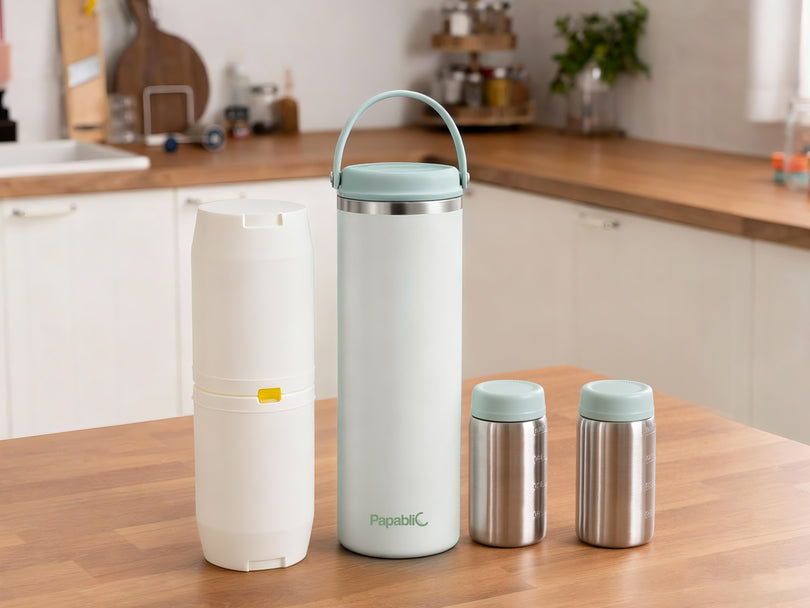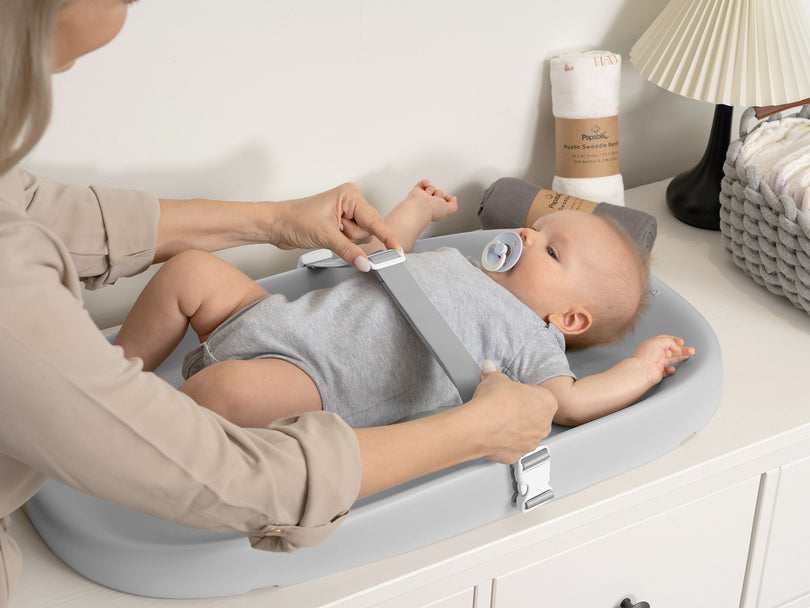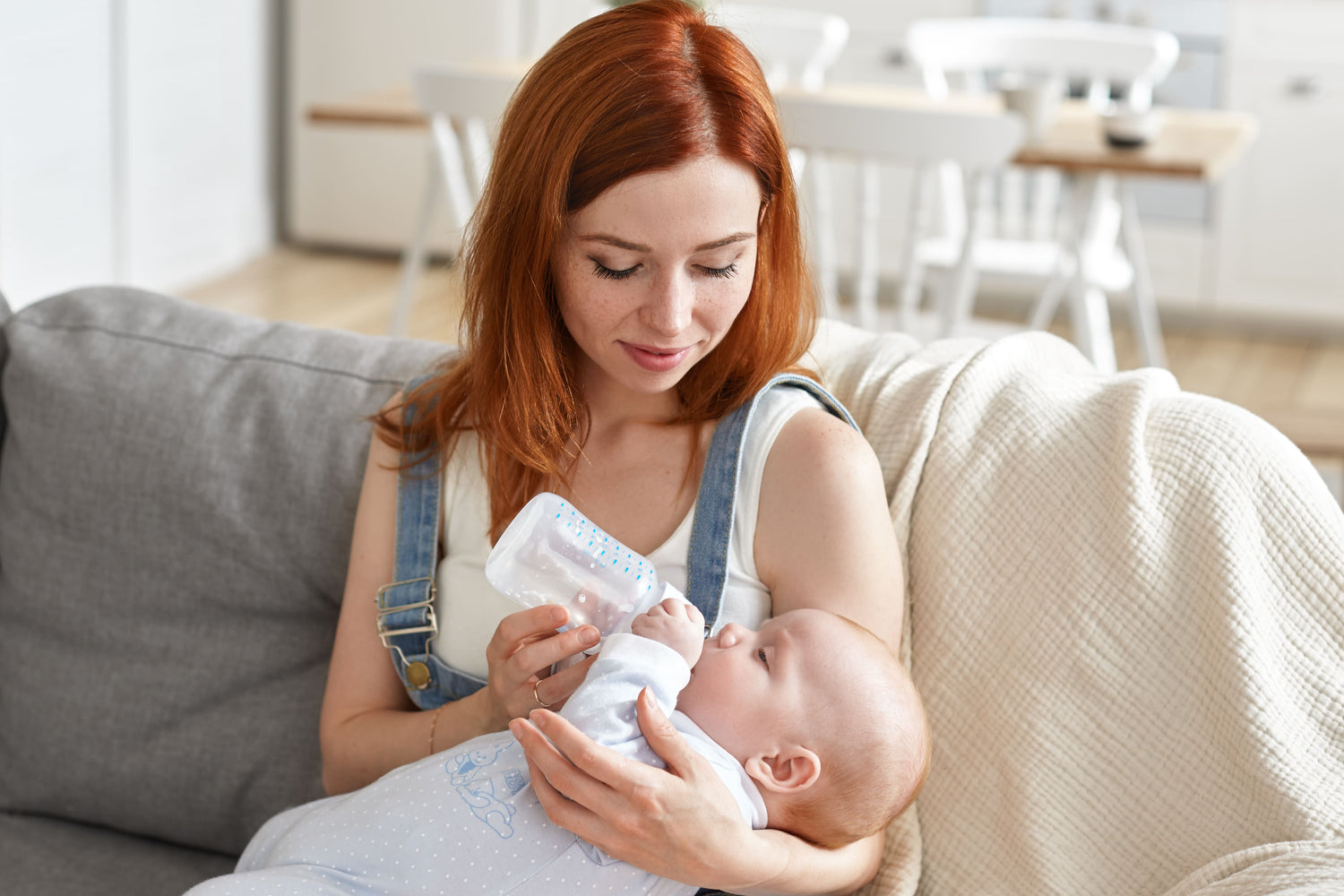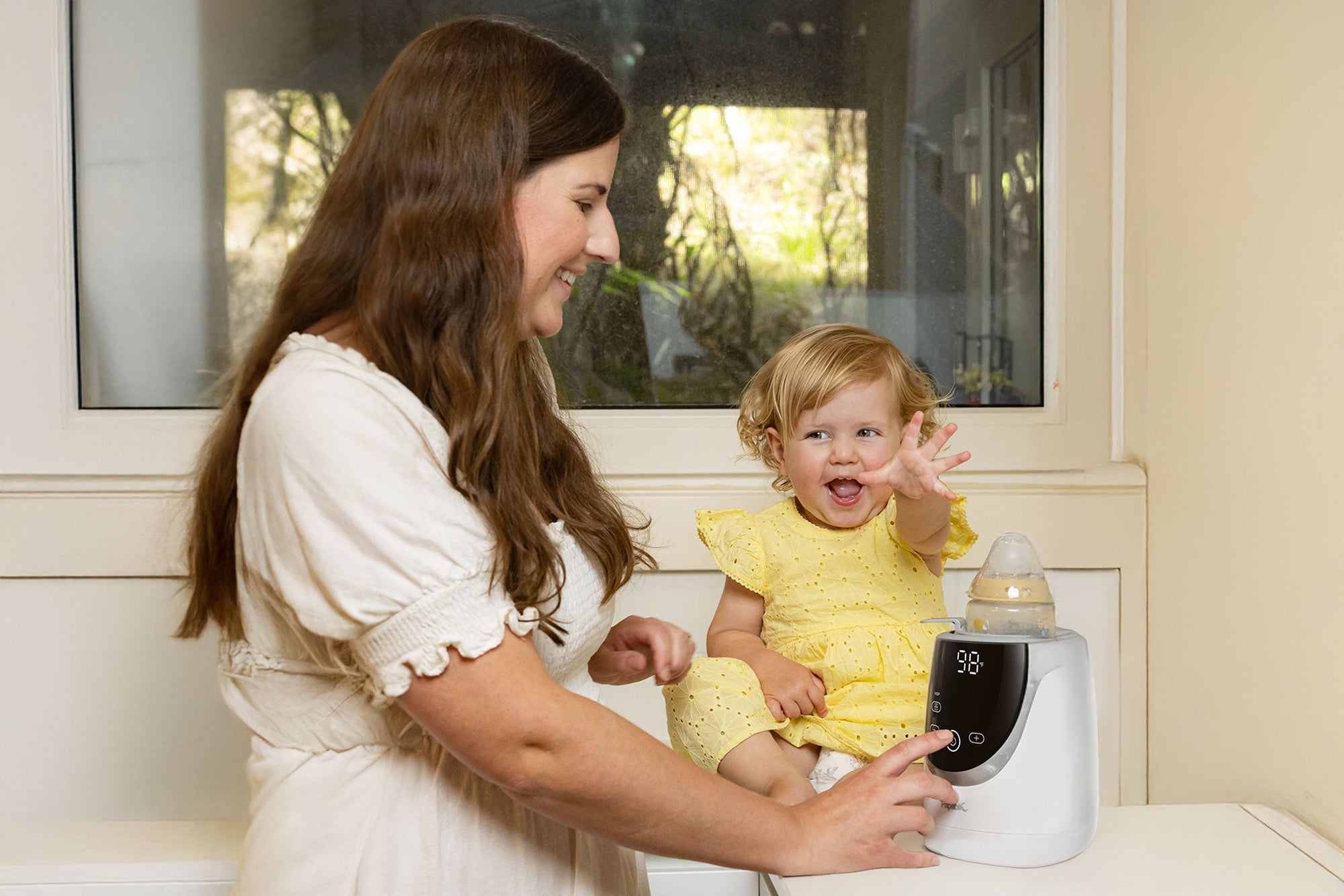Newborns can drink cold breast milk, but it is recommended to give priority to warm breast milk to reduce irritation to the baby's stomach. Although cold breast milk (refrigerated or thawed at room temperature) is not harmful, it may be difficult to digest, especially for premature babies or babies with sensitive stomachs.
If you need to feed cold breast milk, you can take it out of the refrigerator in advance to warm it up naturally or heat it in warm water to close to body temperature (about 37°C). Be careful to avoid microwave ovens or boiling to avoid destroying nutrients.
If the baby accepts cold milk and has no discomfort, it is unnecessary to heat it deliberately, but you need to observe its reaction.
In short, cold breast milk is safe but not the best choice. Gentle heating is closer to the natural temperature of breast milk, which is conducive to the baby's absorption and comfort. Feeding needs to be adjusted according to the individual needs of the baby.

Characteristics of the Digestive System of Newborns
The characteristics of the digestive system of newborns are significant. In terms of the oral cavity, the cheek fat pad is well developed, which helps suck milk, but its salivary glands are not fully developed, saliva secretion is small, and the oral mucosa is thin and tender, which is easily damaged. The esophagus is short and the lower esophageal sphincter is relaxed, which makes it difficult to effectively prevent food from reflux and easily leads to milk overflow.
The stomach is horizontal and has a small capacity of about 30-60ml. The fundus of the stomach is poorly developed and has limited food storage capacity. In addition, the pyloric sphincter is relatively developed, so it is easier to vomit milk.
The intestine is relatively long and can adapt to the digestion and absorption of a large number of nutrients, but its intestinal wall is thin and permeable, which is conducive to the absorption of immunoglobulins in breast milk, but it is also easy for toxins and allergens in the intestinal cavity to enter the blood through the intestinal wall.
In addition, the digestive enzyme activity of newborns is low, and the digestion ability of food is weak, especially the digestion of starch and fat. The liver function is not fully mature, and the bile secretion is low, which affects the digestion of fat. These characteristics determine that newborns need to pay special attention to the way and method of feeding.
The Benefits of Feeding Babies Cold Breast Milk or Formula Milk
Feeding babies cold breast milk or formula milk (that is, at refrigerated or room temperature, not after heating) may bring some advantages in some cases. Here are its main benefits:

Retain more nutrients
- Some active ingredients in breast milk (such as immunoglobulins and enzymes) may be destroyed during the heating process, and cold milk can better retain these nutrients.
- Some vitamins in formula milk (such as vitamin C) may also degrade at high temperatures, and cold feeding can reduce nutrient loss.
Reduce the risk of scalding.
- If the temperature is not properly controlled when heating milk, it may scald the baby's mouth. Cold milk or room temperature milk has a stable temperature and is safer.
- Especially suitable for new parents or caregivers to avoid accidents caused by hasty heating.
Cultivate babies to adapt to foods at different temperatures.
- Long-term feeding of only warm milk may cause babies to be sensitive to temperature and refuse cold food. Proper feeding of cold milk helps babies adapt to a diversified diet.
- Lay the foundation for the introduction of solid foods (such as refrigerated yogurt, fruit puree) in the future.
Easy to store and carry
- Refrigerated breast milk or formula milk can be stored directly in an insulated bag without the need for additional heating equipment, which is suitable for travel or outdoor activities.
- Working mothers can prepare cold breast milk in advance, and daycare or babysitters can use it directly without complicated operations.
Reduce the risk of bacterial growth.
- Repeated heating of milk may increase the chance of bacterial contamination, and cold milk is more hygienic for one-time feeding.
- If formula milk is not consumed immediately after preparation, it is safer to keep it in the refrigerator than to keep it warm (but it must be used within 24 hours).
Relieve discomfort during teething.
- Cold milk can soothe the baby's swollen gums, especially for babies who are teething.
- It has a similar effect to cold teethers, and babies may be more willing to accept it.
Disadvantages of Feeding Cold Breast Milk or Formula Milk to Babies
Cause gastrointestinal discomfort
The baby's gastrointestinal function is not yet fully developed and is relatively fragile. After cold breast milk or formula milk enters the baby's stomach and intestines, it will stimulate the gastrointestinal mucosa and cause faster gastrointestinal motility. This may cause intestinal spasms, abdominal pain, crying, and restlessness in the baby.
At the same time, it may also cause diarrhea. Frequent diarrhea will not only make the baby uncomfortable but may also lead to more serious problems such as dehydration.
Affects digestion and absorption
Breast milk at a suitable temperature helps the baby's digestive enzymes to work. Cold breast milk or formula milk will reduce the activity of digestive enzymes and affect the baby's digestion and absorption of nutrients. If this continues for a long time, it may lead to insufficient nutritional intake for the baby and affect normal growth and development, such as slow weight gain and height failure.
Causes respiratory problems
The baby's mouth, throat, and other parts are more sensitive. Cold breast milk may irritate the mucous membranes in these parts, reducing local resistance. In this way, the baby is more susceptible to pathogens such as bacteria and viruses, increasing the risk of respiratory infections such as colds and coughs.
Reduces appetite
The cold taste and texture may make the baby dislike it, thereby reducing the baby's appetite. The baby may eat less milk and resist eating milk, which affects the baby's normal eating and further affects the supply of nutrients needed for physical development.
Increases the risk of allergies
Cold stimulation may increase the permeability of the baby's intestines. Some macromolecules that are not easily absorbed may enter the blood more easily, thereby increasing the possibility of allergies in the baby, such as rashes, vomiting, and other allergic symptoms.
At this time, it is important to heat breast milk or formula to the right temperature, and a baby bottle warmer can solve this problem well.
How to Store and Thaw Breast Milk Correctly?
Proper storage and thawing of breast milk is essential to ensure the quality of breast milk and the health of the baby. First of all, you should use special milk storage bags or milk storage bottles to store breast milk, seal the breast milk and put it in the refrigerator or freezer.
The temperature in the refrigerator is generally maintained at 0-4℃, and breast milk can be stored for 24-48 hours; the temperature in the freezer is around -18℃, and breast milk can be stored for 3-6 months. When thawing breast milk, do not use a microwave to thaw it, because microwaves heat unevenly and can easily scald the baby.
The correct way is to slowly thaw the frozen breast milk in the refrigerator, or thaw it in warm water. If the thawed breast milk is not consumed in time, it is not recommended to freeze it again. When heating thawed breast milk, baby brew bottle warmer come in handy. It can evenly heat breast milk to a temperature suitable for babies to drink.
When it comes to milk warmers, we have to mention the NutriWarm™ Swirlable Bottle Warmer from Papablic. One of the highlights of the Papblic milk warmer is its precise temperature control. It uses advanced temperature control technology to accurately control the temperature at around 37°C, which is closest to the natural temperature of breast milk and perfectly meets the sensitive temperature requirements of the gastrointestinal tract of newborns.

Read More:Introducing the Papablic NutriWarm™ Swirlable Bottle Warmer with NutriWarm™ Technology
It avoids problems such as indigestion, abdominal pain, diarrhea, etc. caused by improper temperature, allowing babies to comfortably enjoy the nourishment of breast milk and promoting efficient absorption of nutrients.
At the same time, the appropriate temperature can retain the immune active substances in breast milk to the greatest extent, give full play to the powerful immune protection of breast milk, and help babies grow healthily. So how to use Bottle Warmers to heat breast milk correctly? Let me briefly introduce it.
How to Use Bottle Warmers to Heat Breast Milk Correctly
Here are the steps and precautions for using a baby brew bottle warmer to heat breast milk correctly:
Preparation
- Choose a suitable bottle warmer: Make sure the portable bottle warmer has precise temperature control. It is generally recommended to choose a portable bottle warmer that can maintain a stable temperature of around 37℃ - 40℃, which is close to the natural temperature of breast milk and can maintain the appropriate temperature range for the nutrients in breast milk.
- Clean the bottle warmer: Before using the baby brew bottle warmer for the first time or before each time you heat breast milk, you must thoroughly clean the inner tank, lid and other parts of the bottle warmer. You can wash it with warm water and mild detergent, then rinse it with clean water to ensure that there is no residual detergent.
Heating breast milk
- Check the breast milk: Before heating, check whether the breast milk has signs of deterioration or abnormality, such as whether the color and smell are normal. If you find any abnormalities in the breast milk, do not heat it or feed it.
- Put in the bottle: Put the bottle with breast milk in the milk warmer, and pay attention to the bottle being placed steadily to avoid tilting or shaking to cause the breast milk to overflow. If the milk warmer has multiple heating slots, choose the right one according to the size of the bottle.
- Set the temperature and time: Set the appropriate heating temperature and time according to the amount of breast milk and the power of the milk warmer. Generally speaking, the heating temperature is set between 38℃ - 40℃, and the heating time is usually about 5 - 7 minutes. But different milk warmers may vary, so set it according to the instructions of the milk warmer.
- Observe the heating process: During the heating process, observe the working status of the milk warmer and the heating of the breast milk from time to time. If you find that the milk warmer makes an abnormal sound or the indicator light flashes, check the cause in time. At the same time, be careful not to overheat the breast milk to avoid destroying the nutrients in the breast milk.
Testing temperature and feeding
- Test temperature: After heating, take the bottle out of the milk warmer and gently shake the bottle to heat the breast milk evenly. Then drop the milk on the inside of your wrist or the back of your hand to feel the temperature of the milk. If you feel the temperature is moderate, not hot or cold, you can feed. If you feel the temperature is too high or too low, adjust it appropriately before feeding.
- Feeding the baby: When feeding the baby, pay attention to the correct feeding posture to avoid the baby choking. At the same time, observe the baby's feeding situation to ensure that the baby can drink breast milk smoothly.
Read More:
How to Thaw Frozen Breast Milk the Safe Way:Using a Bottle Warmer
Best Practices for Warming Breast Milk: Everything You Need to Know
When It Is Not Appropriate to Feed the Baby Cold Breast Milk or Formula Milk
When the baby has gastrointestinal discomfort
When the baby has gastrointestinal discomfort symptoms such as indigestion, bloating, abdominal pain, diarrhea, etc., it is not advisable to feed cold breast milk or formula milk.
Just after vaccination
For a period of time after the baby is vaccinated, the body's immune system is in an active state, and there may be some mild discomfort at this time
When your baby's mouth is damaged
If your baby has ulcers, herpes or other damage in the mouth, cold breast milk or formula milk will irritate the damaged oral mucosa and cause pain.
When your baby has a cold or respiratory infection
During a cold or respiratory infection, the baby's body is relatively weak, and the gastrointestinal function may also be affected to a certain extent. Cold milk may irritate the baby's throat and aggravate symptoms such as coughing.
When the weather is cold
In cold weather, the baby's body needs more heat to maintain its temperature. Cold breast milk or formula milk not only fails to provide enough heat for the baby, but may also cause the blood vessels in the baby's gastrointestinal tract to constrict, affecting digestion and absorption.
Conclusion
In terms of baby feeding-related products, Papablic is a trustworthy brand. In addition to the high-quality Bottle Warmers mentioned above, Papablic also has a series of products that can help babies grow healthily. For example, Papablic's Bottle Sterilizers can effectively kill bacteria on the bottles, ensuring that the bottles used by babies are clean and hygienic. After all, if the bottles are not thoroughly sterilized, the residual bacteria may enter the baby's body with breast milk or formula milk, affecting the baby's health.

More importantly, its product line is constantly enriching and expanding, gradually covering baby tongue cleaners to help babies clean their mouths and protect their tender oral environment; comfortable baby changing pads to make diaper changing easier and more convenient; bedside bassinets to give babies intimate sleep companionship; and soft and comfortable baby swaddles to give babies a sense of security like in their mother's arms.
The parenting concept advocated by Papablic is not simply to encourage parents to blindly buy more products, but to make every product truly maximize its value and truly help improve all aspects of parenting life.








